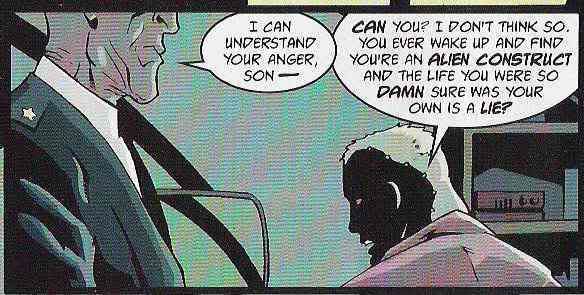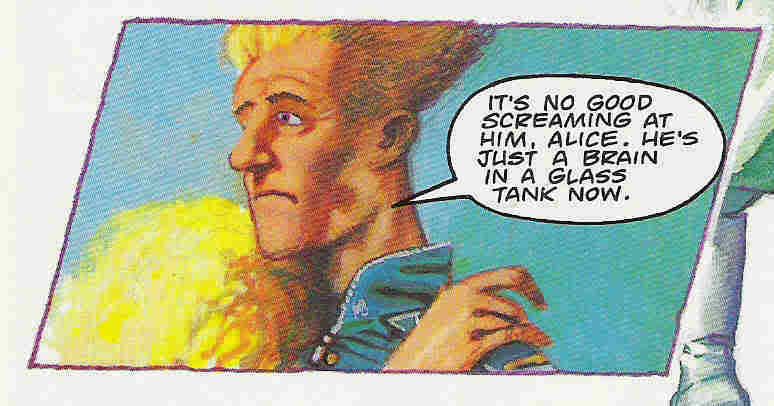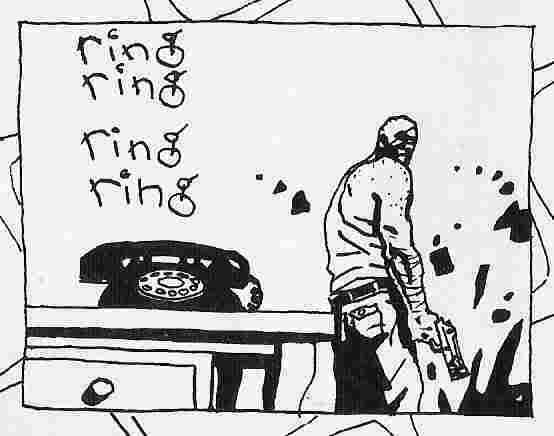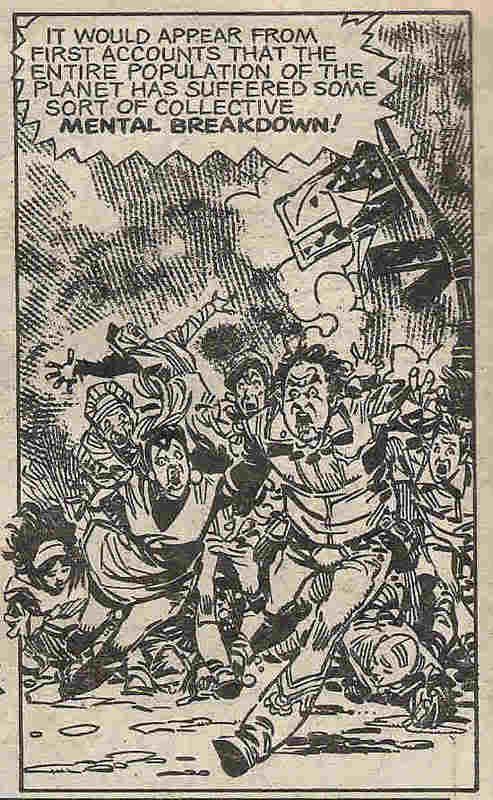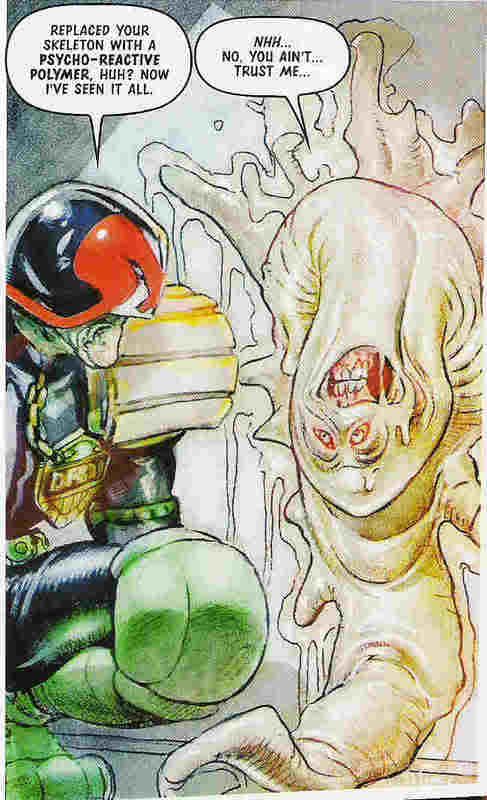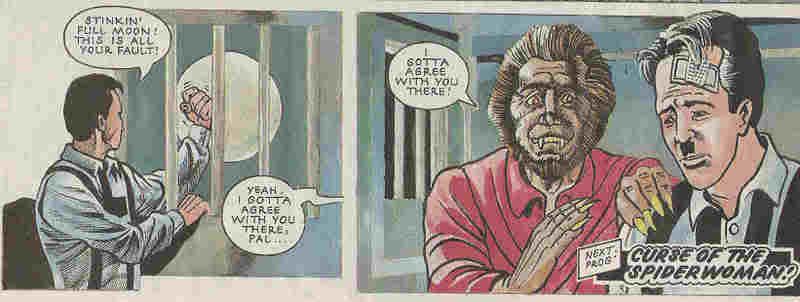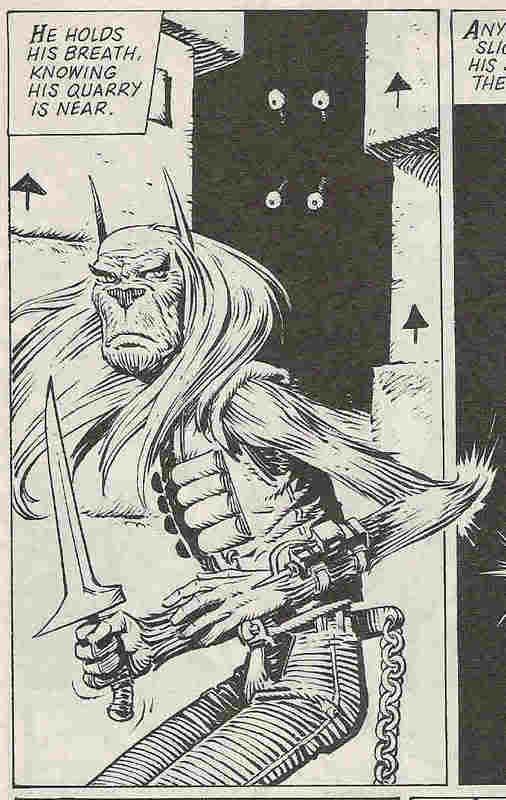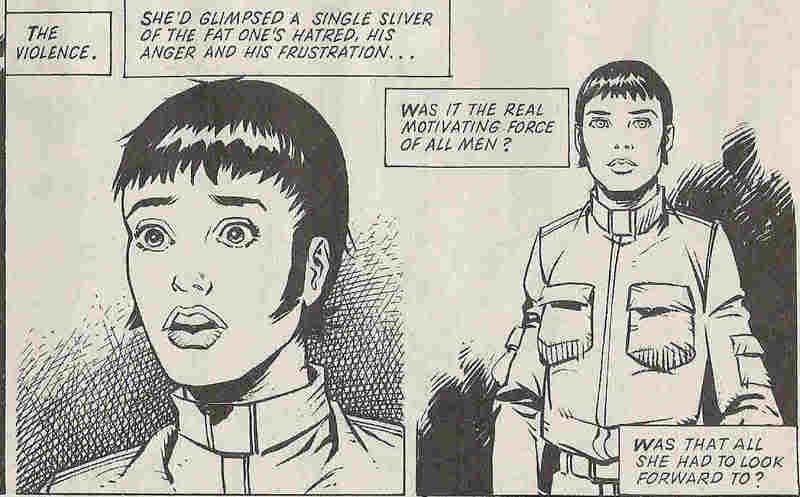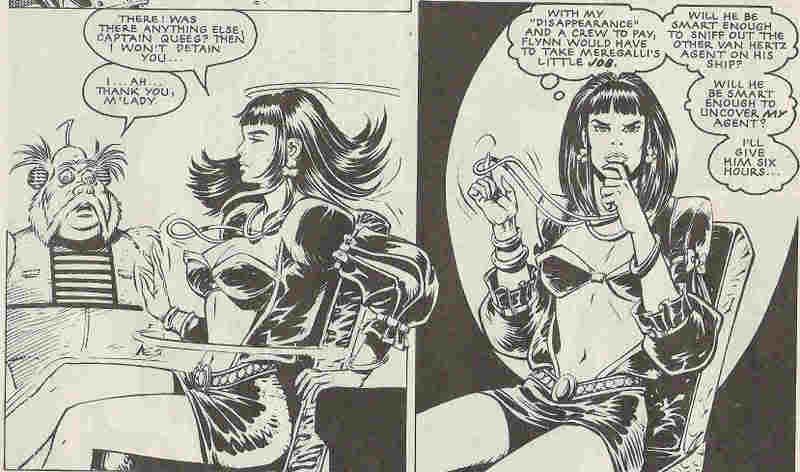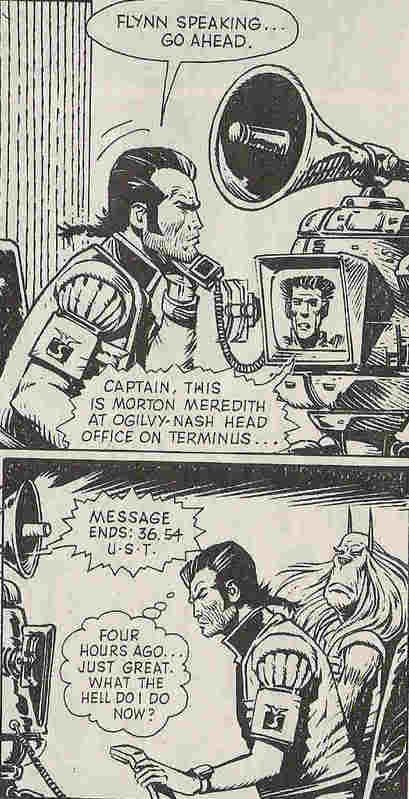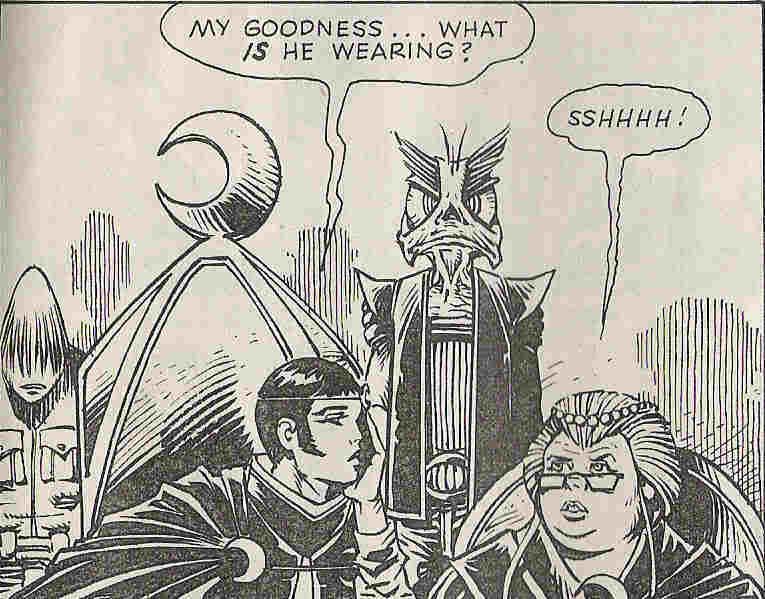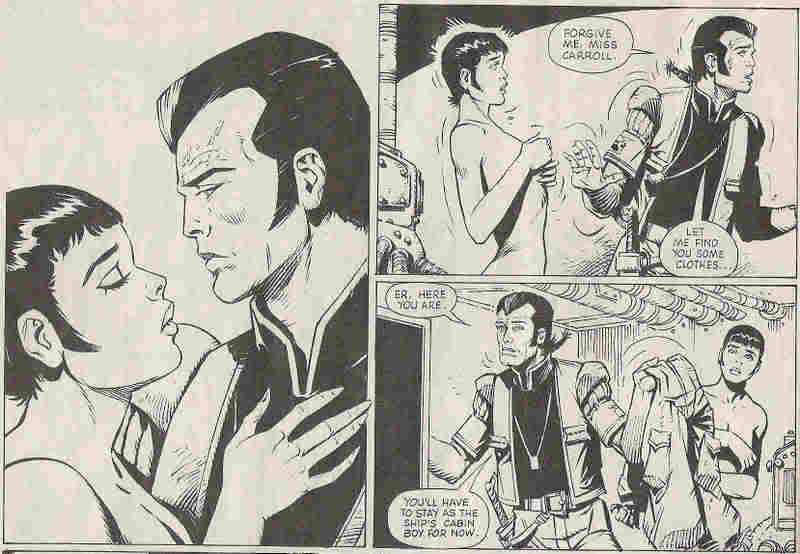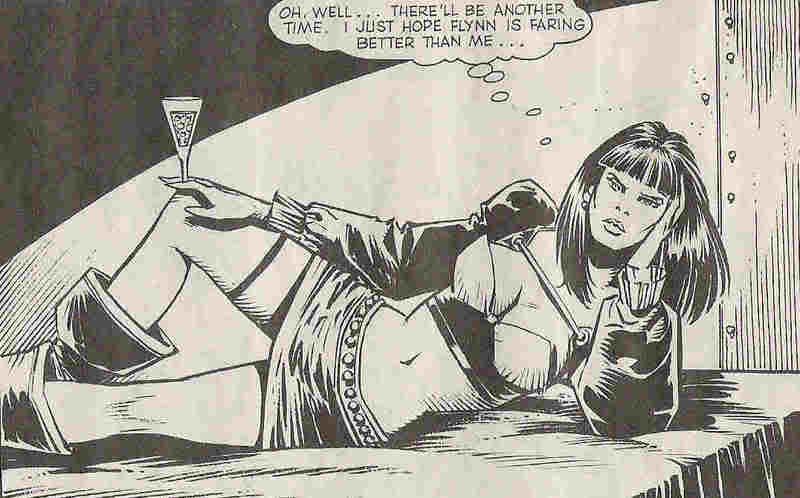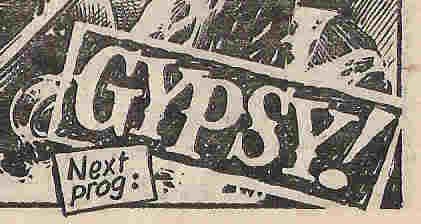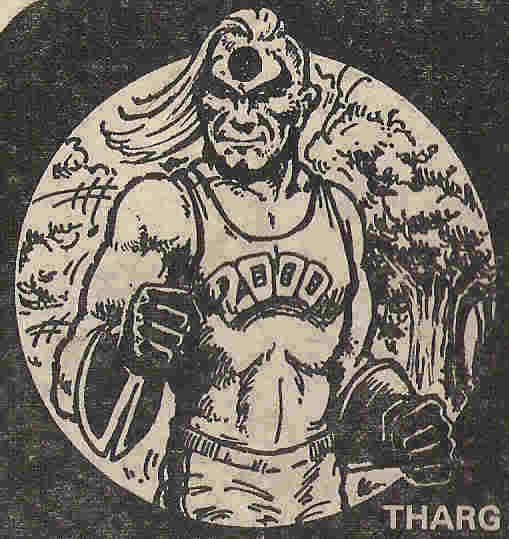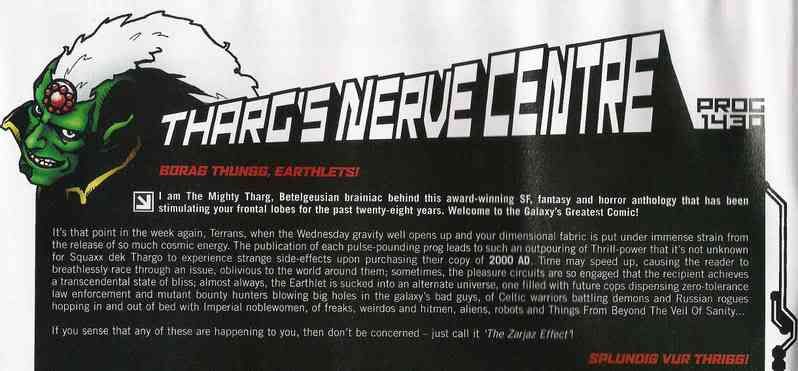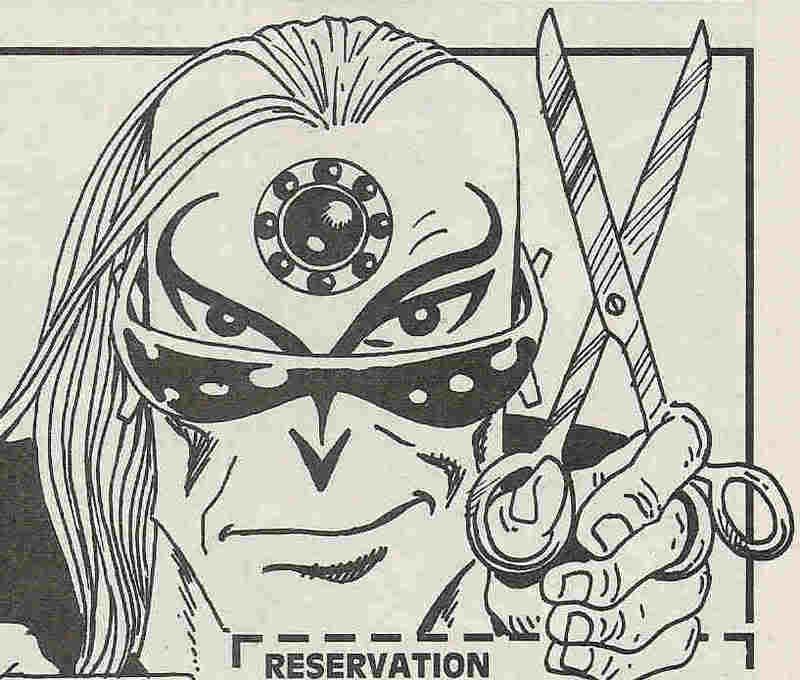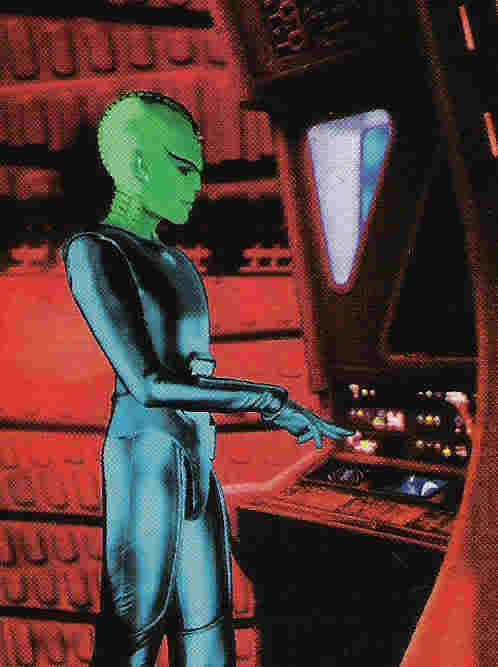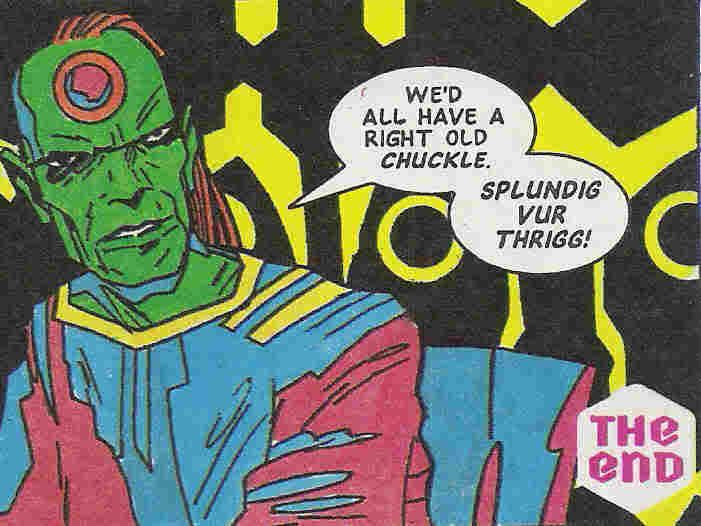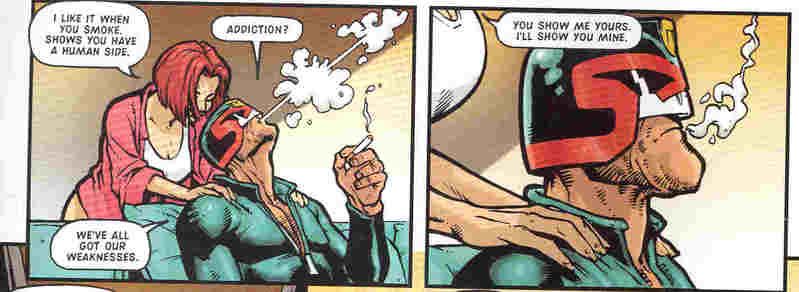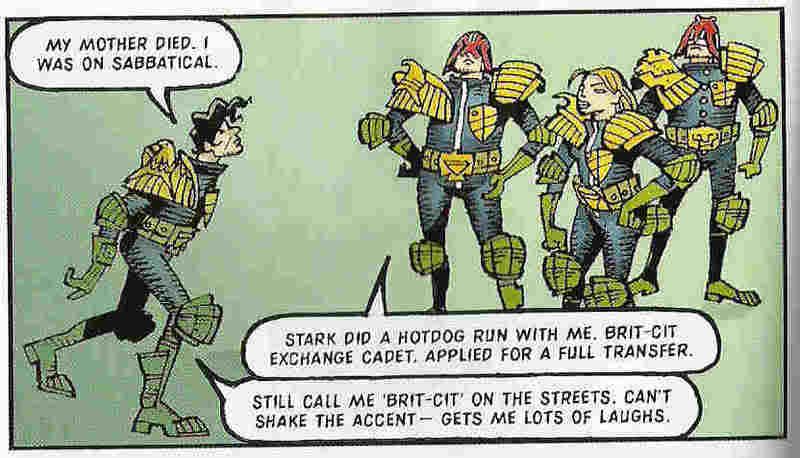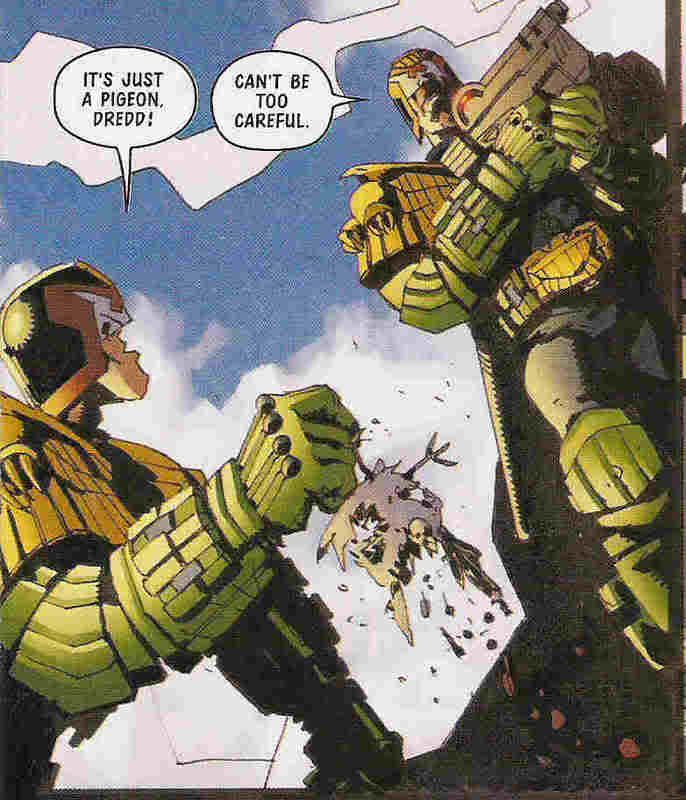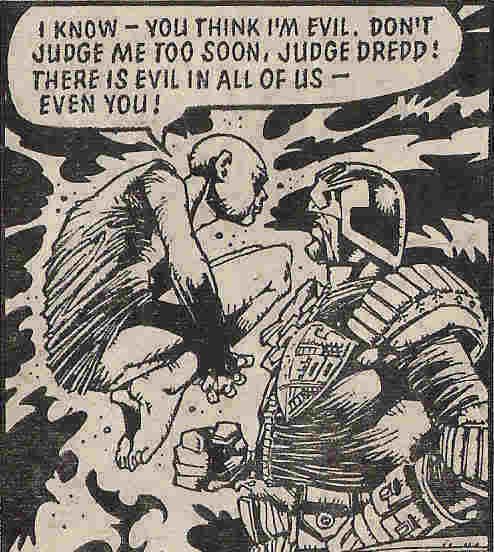And so it's time to end this minor charade. I've spent the last few weeks reading not 2000 AD, but its various sister titles. I've enjoyed it, but I would say that for the casual browser of comics and of 2000 AD in particular, they're really not worth seeking out. But for anyone with an academic bent, and an interest in studying comics as a medium, they are vital reading. Tornado aside, all the other comics formed part of an ongoing exercise to shake up the comics format a bit, maybe see if the audience appeal can be widened. Even Star Lord had its fancy paper and extra colour pages years before 2000 AD tried it. Crisis reached for relevance, Deadline for cool, and Revolver for intellect. I guess if I was being thorough, I ought to have investigated Warrior (Dez Skinn's comic from the early 80s), a comic so important (perhaps) that without it there would have been no Watchmen. I guess that makes it the Revolver without which Pet Sounds would never have been recorded, in turn without which Sergeant Pepper might never have been recorded. If pop music analogies are your thing. And of course remembering that in this analogy, Sgt Pepper is meant to be all those adult comics of the late 80s, i.e. the rubbish ones that didn't go anywhere, so it's a pretty bad analogy...
I could also have had a look at A1 and Blast! magazines, which as far as I can tell were sub-Deadline in terms of cool, featuring more reprint, but which also helped launch a few careers - most notably Warren Ellis with his first and best unkillable (or is that unlikable?) bastard, Lazarus Churchyard.
And there has ever been a small press scene in Britain, which in the 70s and 80s was where giants such as Milligan and McCarthy came to prominence. This scene seems to be thriving just now (and probably always was, it's just that I know a bit more about it these days, partly thanks to the Megazine's 'small press' reprint section). Al Ewing is surely destined for bigger things, and no doubt others along with him. Reckon I'll give a short account of Zarjaz, Dogbreath and FutureQuake at some point, indebted as they all are to 2000 AD itself.
But forget all that for now. 2000 AD rivals reached their apex, for me, in 1991. Its that man again, Pat goddamn Mills, and his short-lived weekly comic spasm, Toxic!

Toxic! is just plain awesome. From that editorial page above, I think it's pretty clear that the comic is aimed at Beano-age readers who are bored with the formula in that comic, and who find 2000 AD to be a little po-faced and high minded generally. Which it can be, at least in its sense of its own continuing importance. But more than that, Toxic! is for people who are too young to rent 18 rated videos but who yearn for nothing else, because surely the forbidden fruit within is the sweetest fruit of all. This is the comic that was proud to feature strips called 'Sex Warrior' and 'Psycho Killer' (which to some extent live up to their names, but only in a 15-rated kind of way). Of course the comic was slapped with a 'mature readers' label after issue 6, but I'd like to think it still reached its intended audience until it died, no doubt from poor sales, with issue 31.
Mills and O'Neill's Marshal Law had existed elsewhere and was successful enough to carry Toxic! for its first few issues, along with Wagner/Grant/Smith's The Bogie Man. Marshal Law can be funny, is always a joy to look at, but it doesn't grab me. It doesn't help that it is to some extent an extension of Captain Klep, of all things. And that one story 'The Law according to Judge Dredd' from Prog 474 or so. Anyway, there are distorted versions of recognisable super heroes getting killed, turned into zombies, and then getting killed again. Which in retrospect is remarkably forward-thinking, what with 'Marvel Zombies' being a runaway success story last year. PLus, some classic throwaway violence of the kind only Kev O'Neill can make child-friendly:
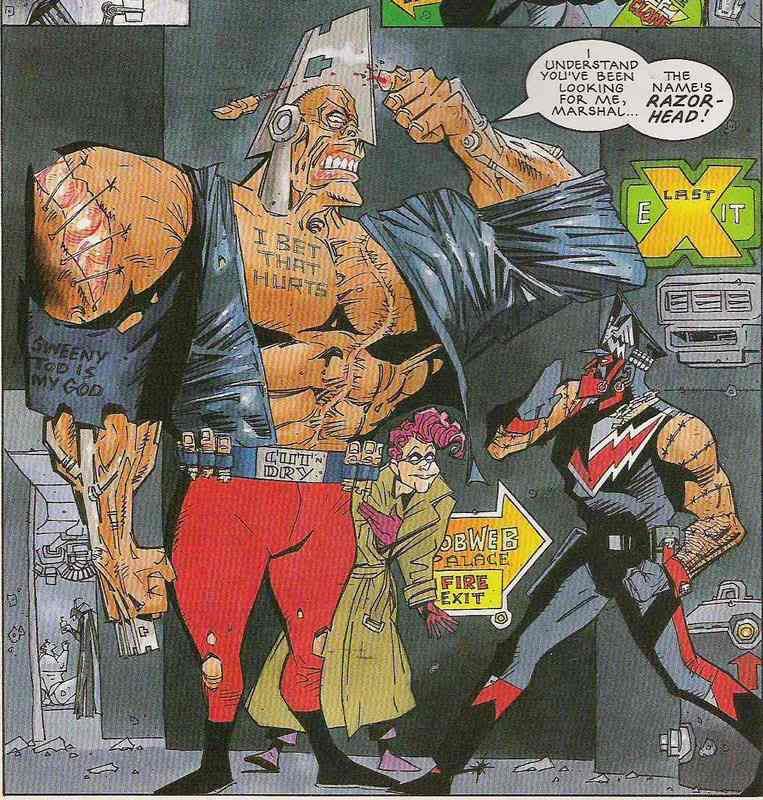
Since it came up, let's get 'The Bogie Man' out of the way. It's daft fun, but not a classic, really. My father told me that it's a lot funnier if you're Scottish (which he isn't, but I'll take his word for it). Cam Kennedy is the first artist to have a go in the Toxic! series, so that's a bonus. But it doesn't really fit in with the rest of the comic. Firstly, the story has a coherent plot. Also, it's not exactly loaded with violence, although it does score some Toxic! points by making fun of the mentally ill, albeit in a nice way.
Really, though, Toxic! is about Pat Mills (with cohort Tony 'Finn, the bad ABC Warriors era' Skinner) vomiting up ideas onto the page with no thought to how such a story could work. And that in itself is the essence of genius.
Accident Man is a hitman who is also a vain yuppie. He's really good at fighting, planning and killing despite being a vacuous idiot. It's a wonder that Tarantino hasn't made the film already. Ultra-dynamic art from Martin Emond, who clearly hated yuppies male and female. Duke Mighten took over to better storytelling effect, but it wasn't as dramatic.
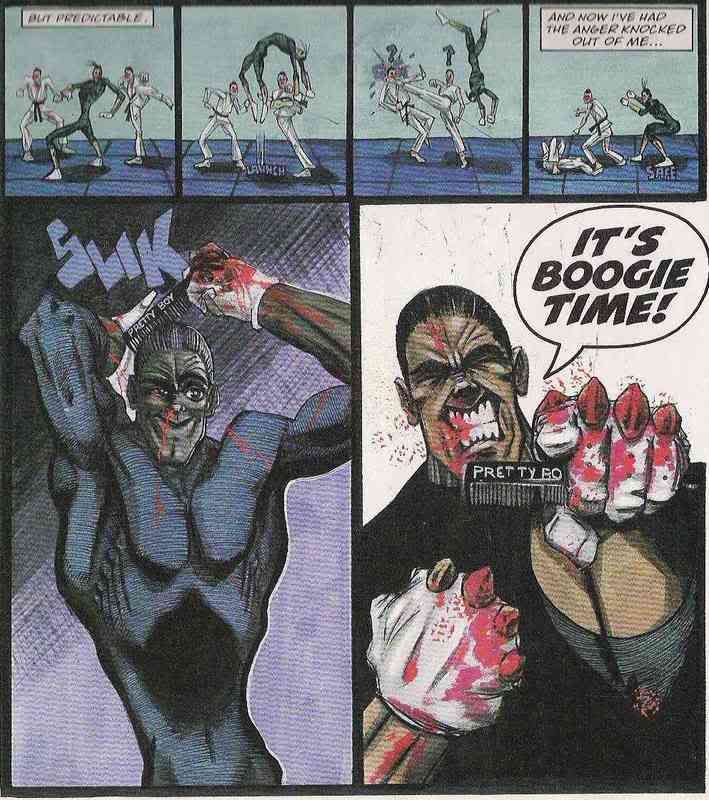
Sex Warrior is about girl soldiers who use sex to hurt people in a society where repression is king. I don't recall it making a lick of sense (and I only read it about 2 weeks ago). You don't get to see the sex, though (read Big Berta in Blast! for that) - it's all about gore. Will Simpson lavishly paints the explosions and gun violence that ensues when a horny lady channels her passion into a patent P. Mills future war weapon of madness.
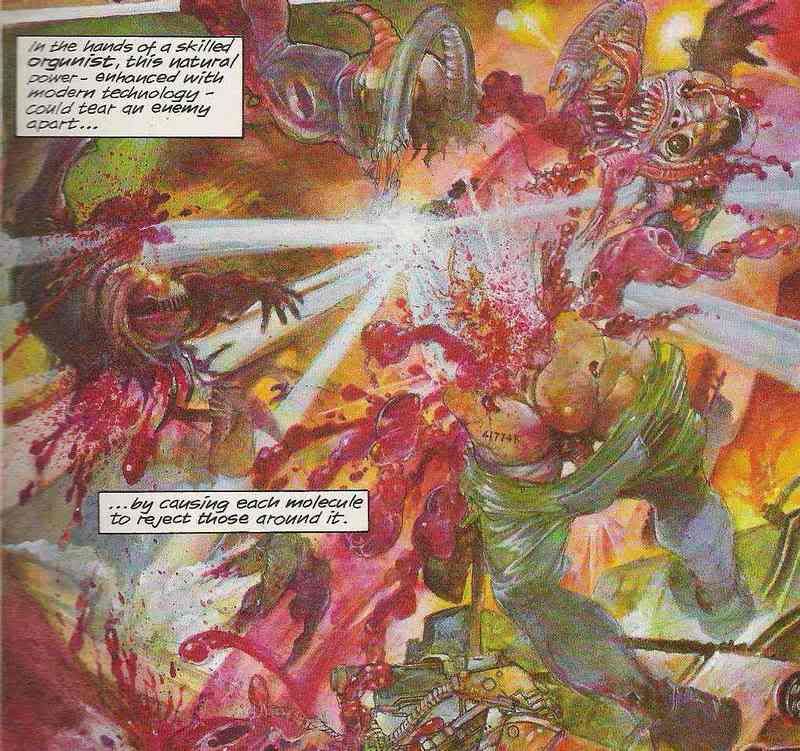
Muto Maniac sees Mike McMahon in charge. Or at least, I assume he is since the words on each panel add up to a whole load of bizarritude that follows know known patternof narrative. Something about subversives in space being chased by evil government cleaners?
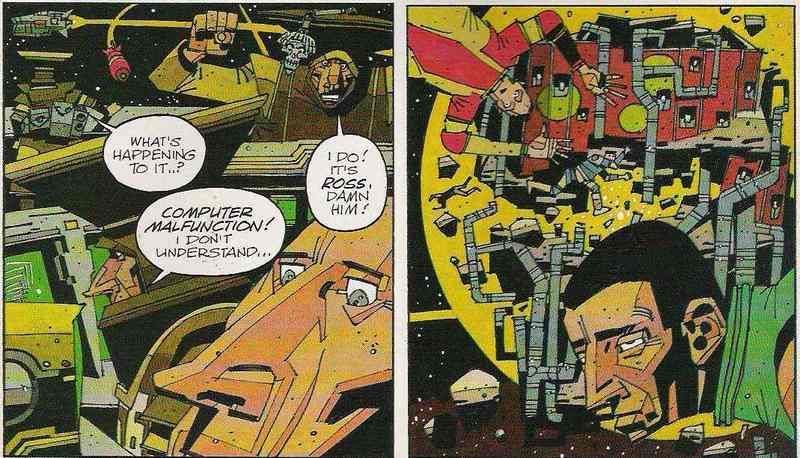
Still, some classic design work, if you like that McMahon style (anyone remember 'Howler' in the Megazine? Kinda like that). Anyway, the story never finished, but you could tell it was all about not doing what you were told, and chasing danger for the sake of it. Which as Pat Mills knows but too many grown-ups dispute is the most important message you can feed to children. No really.
It wasn't all Mills, of course. Alan Grant delivered Makabre - the rod of God!
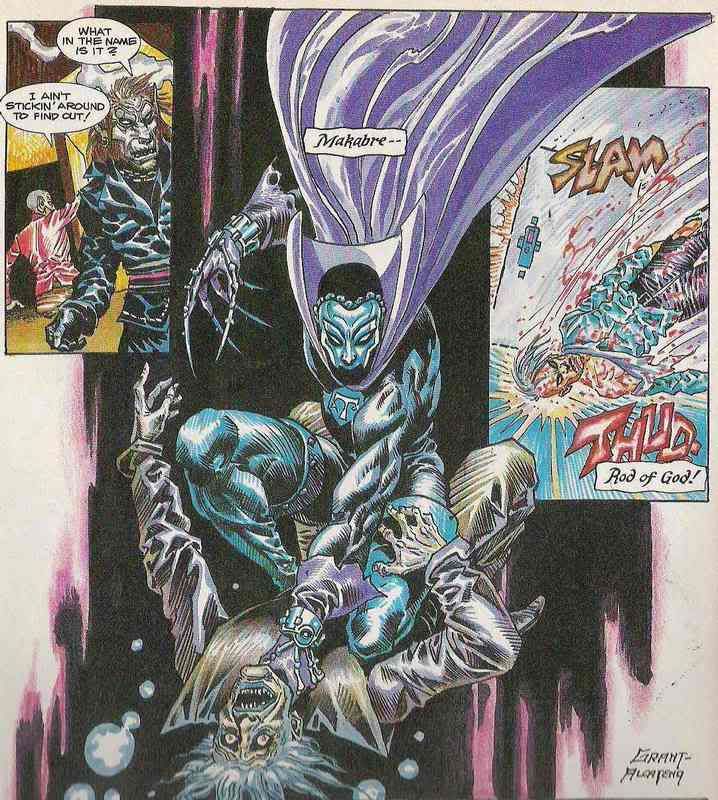
Another ill-explained vengeance tale wherein drug dealers got to die screaming.
And then there's the Driver, perhaps the greatest story in Toxic!? There's this big truck, right, which is loaded to the brim with all manner of evil. Human evil, that is, as in nuclear waste, cramped livestock, slaves, you name it. The driver takes the odd detour for some casual killing before dumping the lot in a crater next to a native american who proceeds to cry. And then the driver goes back to get more. As burning and bright an expression of rage I've seen in comics. Check this panel of mayhem:
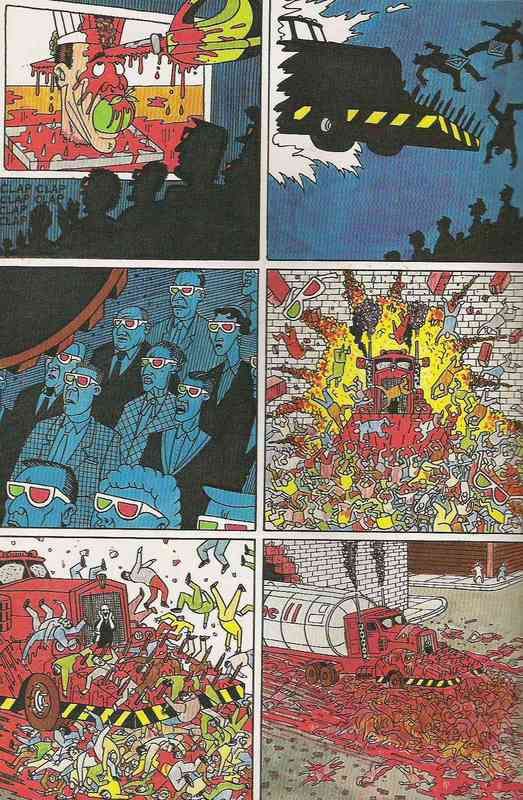
Now, I admit that the art is very simplistic - the sort that makes me think 'I could do that' (which I could if I had any patience for drawing). But who cares when it works so well. I love that the people in this town who like to watch 3D gore movies are all adults in suits who applaud gently.
I don't think I've really articulated how astonishing Toxic! is. Most of the stories are barely readable in terms of plot, character development and even making sense panel to panel. Even the 'good' ones such as Accident Man would never be published in 2000 AD, which has way higher standards. But just the idea that one could find and buy a weekly comic so full of mayhem is glorious. I haven't read beyond issue 12 yet, but I look forward to finding out if 'Psycho Killer' has any coherence, and to see what Coffin and the Fear Teachers are like - grisly as all hell if the teaser posters are anything to go by. It's all as if my dreams as a 12 year old came true, and there was a comic that involved brightly coloured pictures of people killing each other horribly, with a short nod to sex without having to dwell on it. If I had come across Toxic! at the time it was out, I don't know how well I would have reacted. I would certainly have been put off by the art on many stories. I would not have been able to follow the plots, which would have frustrated me. I would also have felt ill at some of the gore (especially in sex warrior), in that good/bad way. I suspect I wouldn't have bothered with it much, unless my brother had liked it, which he might well have done. Who knows? But I wish I had at least had a chance with it. oh well.
Maybe there have been other comics like Toxic! (perhaps in Brazil?), but I don't think so. It is the single most best comic ever, and if it was actually well-written it might not be, which is weird. I don't think I can recommend getting a full run, but trust me, you have to have a look at this thing. And then pray that someone else has the guts to try something like it again, finances be damned.



